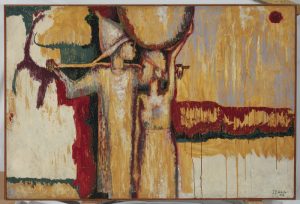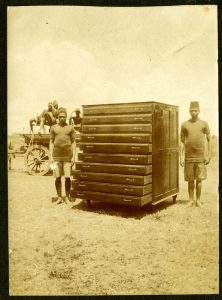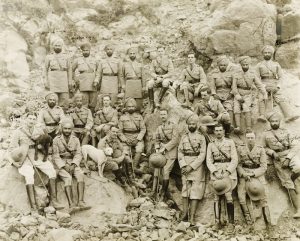To understand racism, we need to understand empire: The British Empire and Commonwealth Collection
Posted on by Fay Curtis.
By the British Empire & Commonwealth Collection team
The British Empire and Commonwealth Museum was an independent museum in Temple Approach, Bristol, which was open to the public between 2002 and 2008.
In 2012, following the museum’s permanent closure, Bristol City Council took responsibility for the vast majority of its collection, which included thousands of photos, films, objects, documents and oral history recordings. They are now cared for by dedicated archive and museum staff.
 Under the Council’s custodianship, these archives and artefacts which tell the stories of empire can be viewed alongside our World Cultures collection and primary sources on the transatlantic slave trade from Bristol Archives.
Under the Council’s custodianship, these archives and artefacts which tell the stories of empire can be viewed alongside our World Cultures collection and primary sources on the transatlantic slave trade from Bristol Archives.
The collection provides insights into diverse lives and landscapes, uniquely reflecting multiple perspectives on a challenging period of history. It contains evidence of the violent oppression of black and brown people across the world, as well as the sustained exploitation of communities and the environment. It also contains stories of hope and courage, creativity and compassion.
 As has been said many times recently, it is impossible to understand the history of racism in Britain today without understanding the history of empire. Our mission is to make this collection available so that people and communities worldwide can examine difficult, forgotten and hidden histories from their own perspectives.
As has been said many times recently, it is impossible to understand the history of racism in Britain today without understanding the history of empire. Our mission is to make this collection available so that people and communities worldwide can examine difficult, forgotten and hidden histories from their own perspectives.
Our work on the collection includes uncovering and documenting these stories, presenting exhibitions both physical and online, and digitising photographs and films from across the world so global audiences can access them. We constantly strive through our cataloguing processes to ensure that black lives are visible and that our terminology doesn’t cause offence. We know we can’t always get it right, and openly invite feedback.
We have the support of an active Advisory Board, several of whom formed part of the diverse group of individuals who co-curated our 2018 exhibition Empire Through the Lens. We also work to share the collection with communities in the UK and overseas, one recent partnership being the Building Shared Futures project between academics and heritage professionals in Kenya and Britain. The material is accessible free of charge in our public searchroom and our visitor numbers are growing every year.
 With our Museum and Council colleagues, we stand fully in support of the Black Lives Matter movement. We know we have more to do in the fight against systemic racism, in decolonising our collections and removing barriers to access. We are grateful to all the people who have educated us by sharing their unique perspectives on empire’s complex story. As a team we take the responsibility of looking after this collection seriously, and want to be continually learning how to do it better.
With our Museum and Council colleagues, we stand fully in support of the Black Lives Matter movement. We know we have more to do in the fight against systemic racism, in decolonising our collections and removing barriers to access. We are grateful to all the people who have educated us by sharing their unique perspectives on empire’s complex story. As a team we take the responsibility of looking after this collection seriously, and want to be continually learning how to do it better.
Visit our website for information about collections and digitised images.
Watch a short introductory video about the collection. Sign up to our email newsletter for regular information about the collection and details of forthcoming exhibitions and events.
Image details
- Kenyan woman picking pyrethrum, 1930s
- Two Figures in a Landscape, by Jimo Akolo 1963
- Makongoro wa Changoro and Juma Wasila, apprentice carpenters from the Nairobi Public Works Dept., c. 1914
- Soldiers from the 14th Sikh Regiment c. 1918